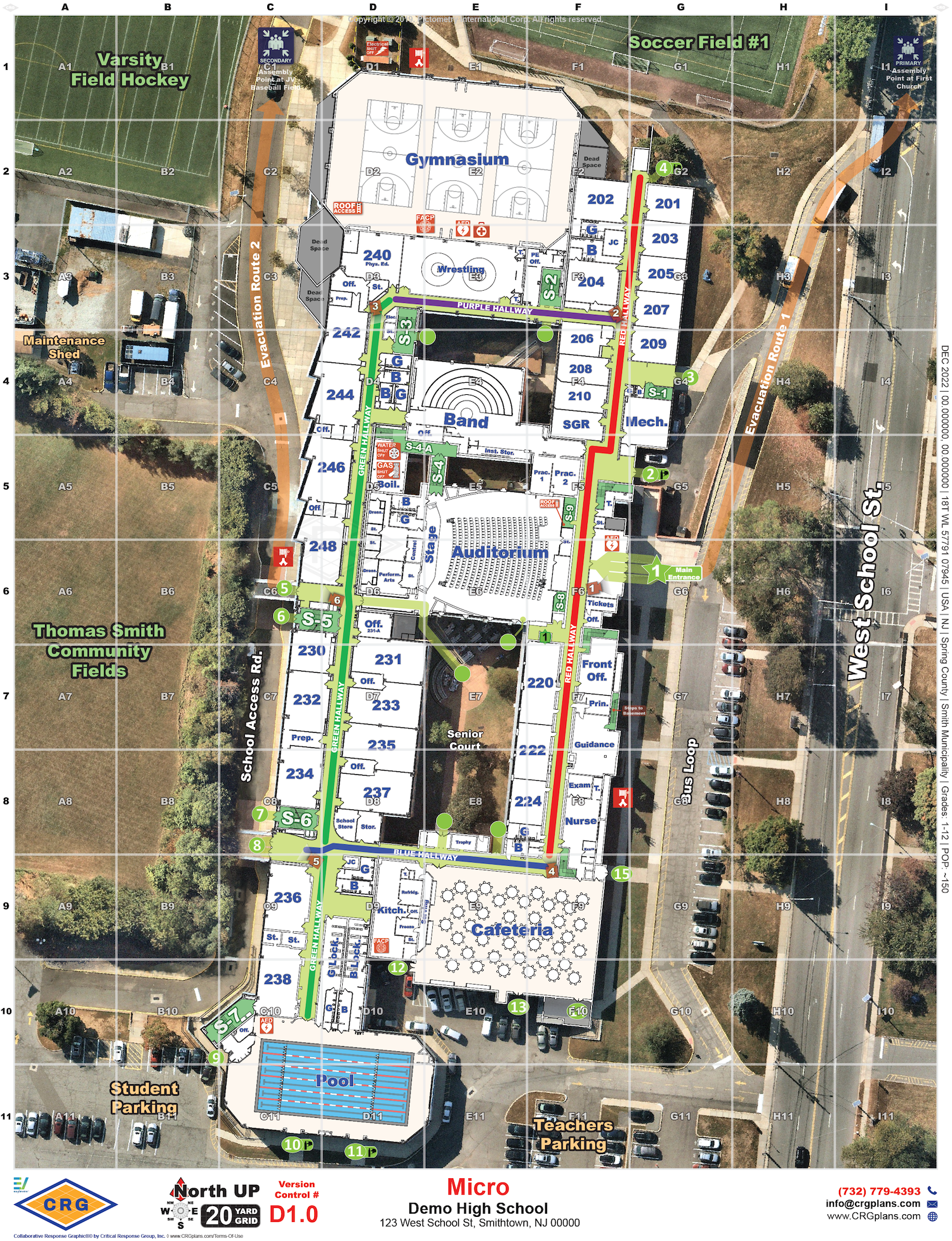See how Critical Response Group can streamline your application process with our proven approach to emergency response maps.
Speak with a Mapping Expert

Critical Response Group Meets All Requirements for Emergency Response Maps Under Texas House Bill 3
Providing law enforcement and first responders accurate information to help improve response time and navigate to the scene effectively. Our school mapping solutions meet all criteria required by legislation:
- Accurate map of each district campus and school building that is developed and documented in accordance with the standards described by Section 37.351 related to developing site and floor plans, access control, and exterior door numbering
- Capability to conduct a walk-through of each district campus and school building using the map described by Subdivision (1)
Texas’ Trusted Provider of Emergency Response Maps
Critical Response Group is setting the gold standard for emergency response maps and partners with and is endorsed by the Texas Police Chiefs Association.




Integrating With the Tools Texas Schools Trust
Our emergency response maps seamlessly integrate into the technology platforms educational institutions across Texas deploy and trust, which ensures that our maps are always there when needed.
Still Have Questions?
Here are some answers to the most commonly asked questions.
What are emergency response maps and how does it work?
Emergency response maps, which we often refer to as Collaborative Response Graphics® (CRGs), combine a gridded reference system, high-resolution imagery, floor plans that are verified by a on-site walk through, and critical features to create accurate and real-life depictions of facilities and their surroundings. By providing law enforcement and first responders with crucial information, they enhance response time and help navigate the scene efficiently.
Why is an onsite walk-through essential for emergency response maps?
The only way to verify accuracy of a school map is to walk-through the entire site and make changes and updates as needed. Schools change every year – structurally, in the labeling of rooms, and in the locations of critical items like AEDs and cameras. Floor plans for the building are often not kept up with these changes. First responders describe location over the radio by what they see, so maps need to match the layout and labeling of the facility. Maps also need to capture how students and staff naturally talk about locations around the building – even if it is not on a sign on the wall or labeled on blueprints – as they will use this language when describing their location under stress. All this data can be only captured during an in-person site visit.
What criteria must the emergency response maps meet according to Texas House Bill 3?
According to Texas House Bill 3, emergency response maps must meet the following criteria:
- Accurate map of each district campus and school building that is developed and documented in accordance with the standards described by Section 37.351 related to developing site and floor plans, access control, and exterior door numbering
- Capability to conduct a walk-through of each district campus and school building using the map described by Subdivision (1)
Who benefits from emergency response maps?
Emergency response maps benefit both law enforcement and educational institutions. For law enforcement, emergency response maps enable coordination and collaboration, resulting in faster response times and decisive actions during crises. Educational institutions can enhance their emergency preparedness with emergency response maps, ensuring efficient action plans and minimizing response time.
Who is required to submit emergency response maps in Texas?
Texas House Bill 3 was created to ensure public school safety, including the development and implementation of purchases and funding for public school safety, security requirements and safety-related resources are allocated to enhance the overall safety of schools. Each school district and open-enrollment charter school shall provide to the Department of Public Safety and all appropriate local law enforcement agencies and emergency first responders with accurate emergency response maps.
Do you have successful case studies implementing emergency response maps?
Yes, there have been successful case studies in various states and districts. For example, Wisconsin schools received $5 million in funding for emergency response mapping, Delaware and New Jersey had all of their public and private schools mapped and Virgina has had over 90% of their schools mapped by Critical Response Group.
Ready to Get Started on Your Emergency Response Maps?
Maximize the value of your dollars with the expertise of CRG and our proven approach to emergency response maps. Let us help you through the process.
